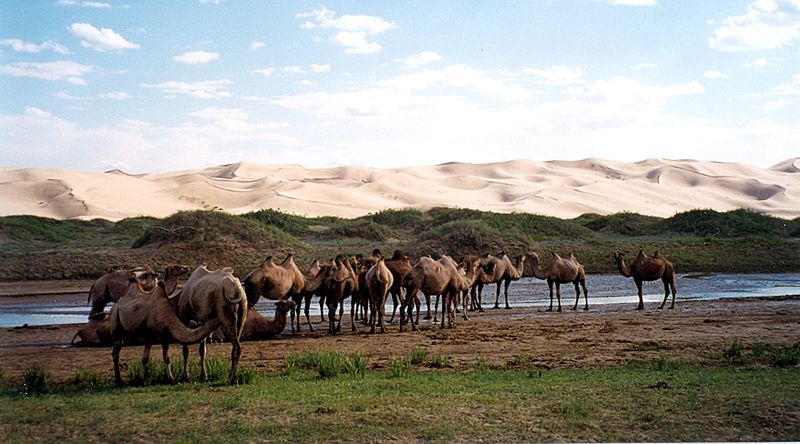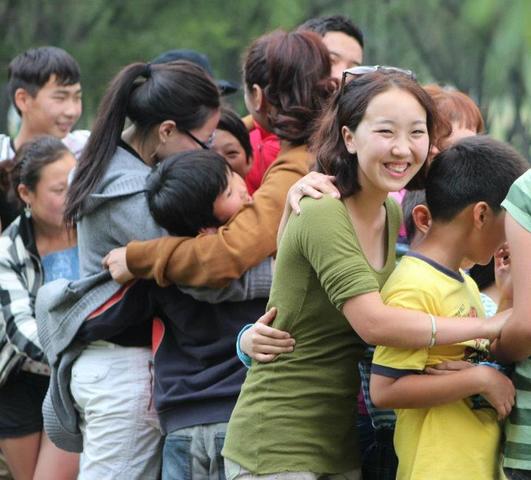Missionary Work 5:Mormonism in Mongolia
The Church of Jesus Christ of Latter-day Saints (often mistakenly called the “Mormon Church”) organizes its congregations geographically. Members don’t choose which meetings to attend by the popularity of a pastor (the Church of Jesus Christ has no paid clergy), or the attractiveness of a building (LDS meetinghouses are attractive, but plain), or the style of worship (everything in the Church is correlated, so the same doctrine is taught with the same emphases in every location). Instead, Latter-day Saints attend the congregation assigned to their location. A few people meeting together is called a “group.” A small congregation is called a “branch.” And where there are hundreds of Latter-day Saints fairly close to each other, the congregation forms a “ward,” with a lay bishop at its head.
When the gospel of Jesus Christ is first taught by missionaries in a new area, this is the way it goes. Eight to ten wards and branches are called a “stake,” administered by a stake president and other lay administrators. When an area has two stakes, it can begin to look forward to having its own Mormon temple in its midst. Such is the situation in Mongolia, where the Church of Jesus Christ has only had a presence for around twenty years, but where a strong stake has taken root. [1]
In 1984 Monte J. Brough, a General Authority of the Church of Jesus Christ, made a trip to Mongolia to do some hunting. He loved the country and its people and wished the gospel of Jesus Christ could be preached there.
- He returned to Mongolia in 1992, this time as a member of the Asia Area Presidency, to explore the possibility of the church offering humanitarian aid to the country. After months of negotiation, the church was permitted to send six missionary couples to teach the gospel and assist in the country's higher education fund. [2]
Mongolia is the most sparsely populated country in the world. It suffers terrible extremes in weather. Nearly half its citizens live in the capital, Ulan Bator. Ninety-five percent of the population are Mongols, and about that many follow Tibetan Buddhism as their faith. It took many years during the first half of the twentieth century for Mongolia to win its independence from China and establish itself as a nation. Pretty much following the political winds of the Soviet Union, Mongolia saw its own Democratic Revolution in early 1990, which led to a multi-party system, a new constitution in 1992, and transition to a market economy (Wikipedia). It was in 1992 that the LDS Church began its humanitarian aid and was able to bring in a handful of senior missionary couples.
- The first sacrament meeting was conducted in 1992 in the apartment of lead missionary couple Kenneth and Donna Beesley. The first two converts—Lamjav Purevsuren and Tsendkhuu Bat-Ulzii—were baptized February 6, 1993. Six months later, the first six elder missionaries arrived (in matching winter gear) prepared to teach English and share the gospel with inquiring Mongolians. That same year, Elder Neal A. Maxwell visited the country, dedicated the land for missionary work, and hosted a reception in which 50 government officials attended. In 1994, the Church was officially registered with the Mongolian government. One year later, the first mission—the Mongolia Ulaanbaatar Mission—officially opened, and a year after that, the first four sister missionaries arrived. In 2001, the Book of Mormon was translated into Mongolian and distributed among the Saints. In 2009, the first Mongolian stake was organized. And last year, the ten thousandth member was baptized.
- “I believe our Church is the largest Christian organization in Mongolia,” says Allen Andersen, a former member of the Seventy and Mongolia’s mission president from 2007–2008. “There are not many countries where the Church can make such a claim.”
Mongolian Latter-day Saints are invested in their faith and serve very actively. Every tenth member of the Church is serving a mission. Older converts are attending institute to make up for lost time. And youth often make the trek to seminary in temperatures south of freezing. Religious discrimination and even forms of persecution are common against Mormons in Mongolia, so Latter-day Saints definitely feel like a minority. Still their numbers burgeon and their dedication increases.
- More than a thousand Mongolian members have served missions, and “every member a missionary” is a practice—not a slogan. “Much of the missionary work is done with members and member referrals,” Andersen says. “It is a wonderful thing to attend the missionary firesides in Mongolia. Many non-member family and friends attend, and there is standing room only in a room filled with the Spirit.”
- Foreign missionaries are not allowed to proselyte or wear name badges on the street, but they can answer questions when asked. There is no door knocking. They only go to homes upon invitation. They also teach English classes in various locations (schools, businesses, police academies, etc.).
- “One of the biggest surprises in Mongolia is the number of native Mongolian missionaries who comprise the mission,” Sister Clark says. In late 2010, we had just seven American elders out of a total of 125 missionaries. By March 2011, that number dropped to four. Almost half of our missionaries were Mongolian sisters!”
- Trips to the Hong Kong Temple require a three-day train ride each way, and the Saints’ temple trips are often 16 days in length. “They spend all of one week going to almost every session, every day. Because of the expense involved, it is often a once-in-a-lifetime experience for many of them.” [3]

